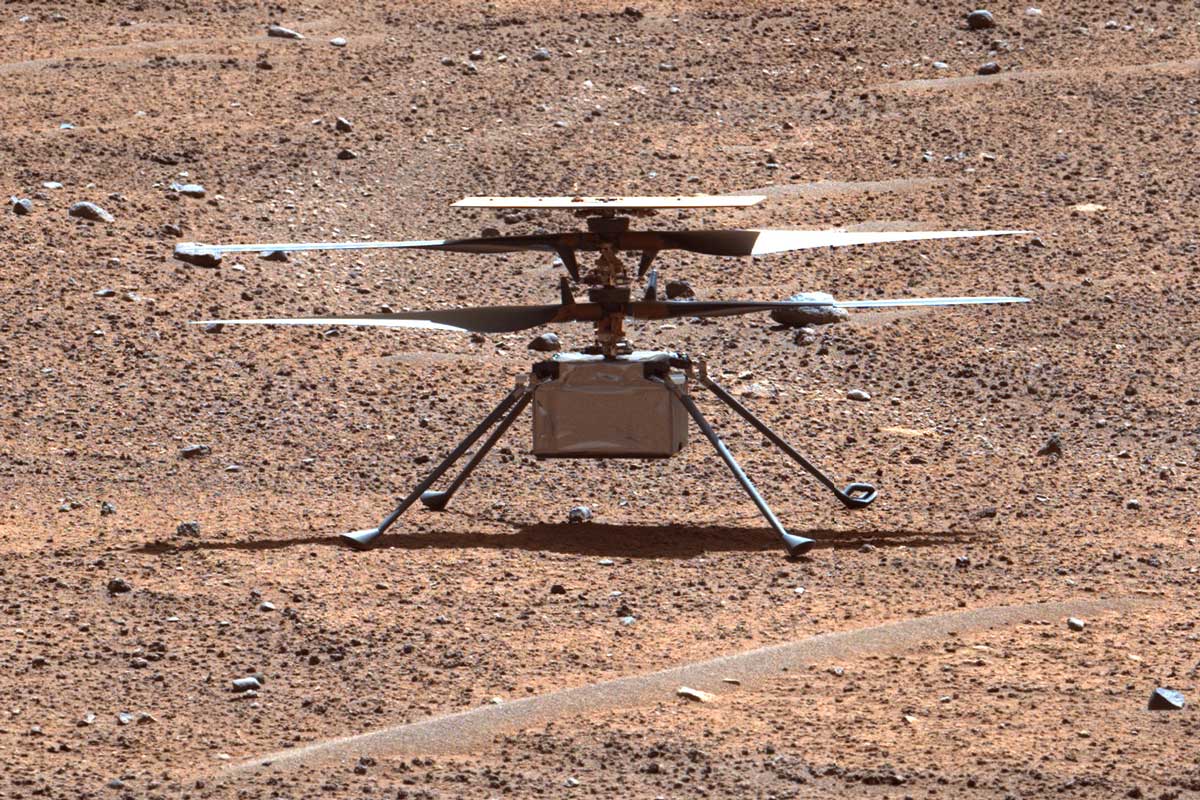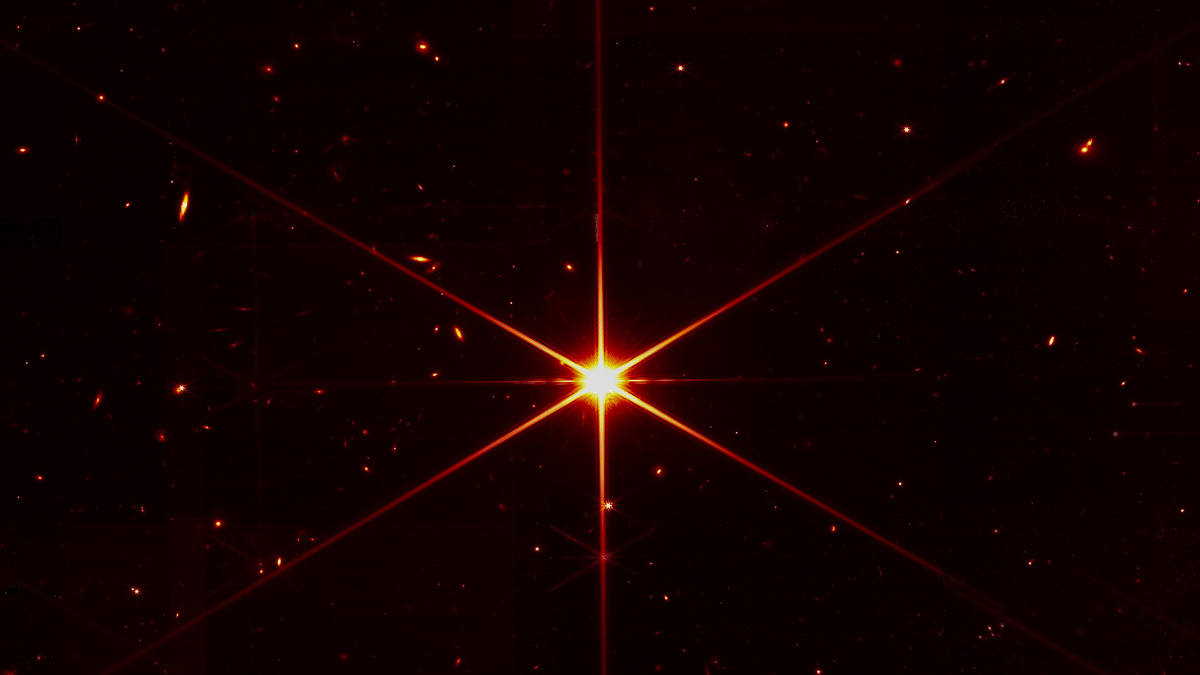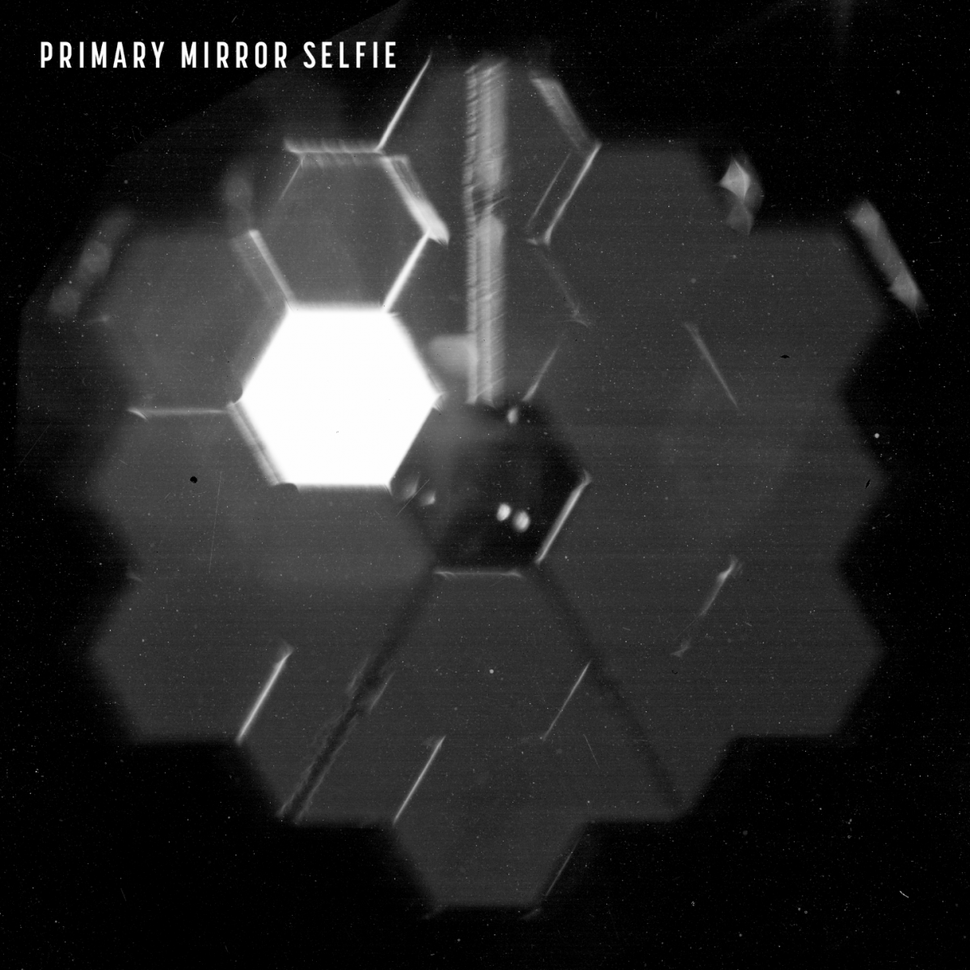Didn't know where else to place this solar system related news tidbit, but on Feb. 22, 2022, Pluto will have made a complete revolution around the sun, which started on July 4th, 1776.



Didn't know where else to place this solar system related news tidbit, but on Feb. 22, 2022, Pluto will have made a complete revolution around the sun, which started on July 4th, 1776.



FFS! Even telescopes are doing selfies these days. When will it end?The James Webb Space Telescope's first images have scientists excited (and a bit relieved)

A "selfie" shows the 18 segments of the James Webb Space Telescope's primary mirror as seen from a specialized camera inside the NIRCam instrument. (Image credit: NASA)
https://www.space.com/nasa-james-webb-space-telescope-first-images-excitement
Is that a naturally powered process, run by solar panels on the thing, or is there a battery that's going to run out and the cooler is going to die some day?Into a Final Cooling phase. This thing needs to be COLD to operate!
Final Cooling - MIRI
Precedes Mirror Alignment Step 7
This page tracks Webb on its journey from Earth to entry into its L2 halo orbit as well as showing Webb's most recently completed deployment step.
Nominal Event Time: Starts - Launch + ~3.5 Months
Status: Ongoing 2 | 1
Webb’s MIRI is in the final phase of its cooldown which is a precondition to mirror alignment step 7.
The Mid-Infrared Instrument (MIRI) carries detectors that need to be at a temperature of less than 7 kelvin to operate properly. This temperature is not possible on Webb by passive means alone, so Webb carries an innovative cryocooler that is dedicated to cooling MIRI's detectors.
This cryocooler uses helium gas to carry heat from MIRI’s optics and detectors out to the warm side of the sunshield. To manage the cooldown process, MIRI also has heaters onboard, to protect its sensitive components from the risk of ice forming. The Webb team has begun progressively adjusting both the cryocooler and these heaters, to ensure a slow, controlled, stable cooldown for the instrument. Soon, the team will turn off MIRI’s heaters entirely, to bring the instrument down to its operating temperature of less than 7 kelvins (-447 degrees Fahrenheit, or -266 degrees Celsius).
Is that a naturally powered process, run by solar panels on the thing, or is there a battery that's going to run out and the cooler is going to die some day?
Here's the status page CGI linked early in the thread: https://www.jwst.nasa.gov/content/webbLaunch/whereIsWebb.htmlI may have missed it, but when is this bad boy expected to launch?
Thanks for the info!Here's the status page CGI linked early in the thread: https://www.jwst.nasa.gov/content/webbLaunch/whereIsWebb.html
It's almost picture time!
Oh and btw if you click on "Webb in 3d solar system" you'll get a rendered solar system with the Webb centered. From there click on "solar system" at the bottom of the page and you'll see a current rendering of our system of the NASA and planetary objects.
Here's the status page CGI linked early in the thread: https://www.jwst.nasa.gov/content/webbLaunch/whereIsWebb.html
It's almost picture time!
Oh and btw if you click on "Webb in 3d solar system" you'll get a rendered solar system with the Webb centered. From there click on "solar system" at the bottom of the page and you'll see a current rendering of our system of the NASA and planetary objects.
It's pretty cool seeing where the planetary probes are these days on that 3D thing. I used to read up on the Pioneer and Voyager probe missions back in the day. Too bad the JWT couldn't take pics of them. You know, before the Klingons use them for target practice or some shit.Here's the status page CGI linked early in the thread: https://www.jwst.nasa.gov/content/webbLaunch/whereIsWebb.html
It's almost picture time!
Oh and btw if you click on "Webb in 3d solar system" you'll get a rendered solar system with the Webb centered. From there click on "solar system" at the bottom of the page and you'll see a current rendering of our system of the NASA and planetary objects.
Nice! Gonna need to beef that thing up if it's gonna survive some battle royale.The multiplayer shield sure looks flimsy. I thought that when they were describing it pre launch. It is designed to absorb a ding or two by smaller items in space if that happens.

